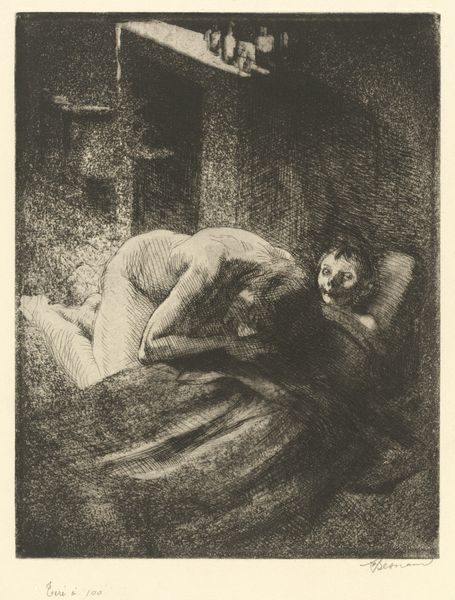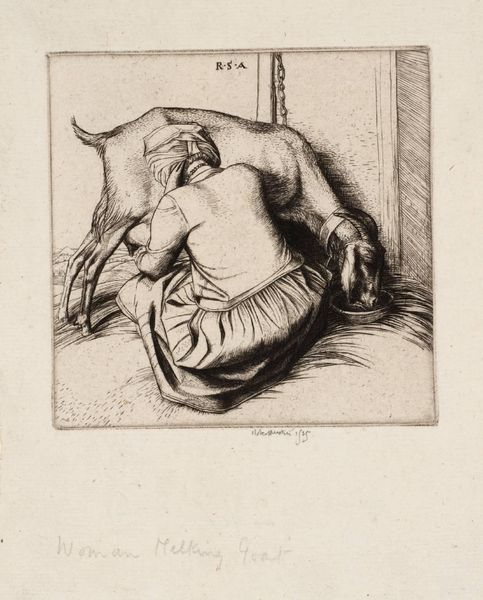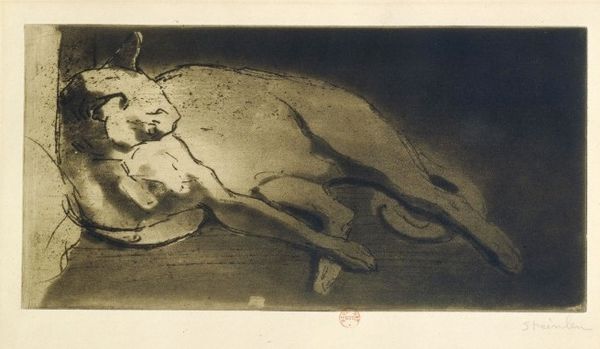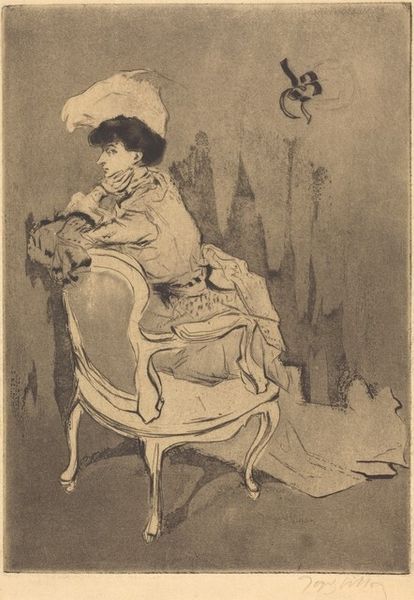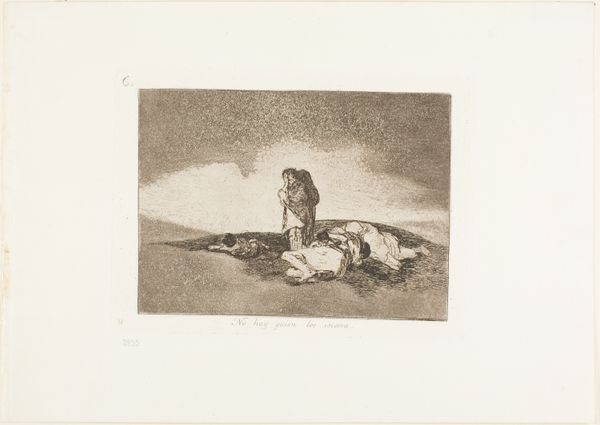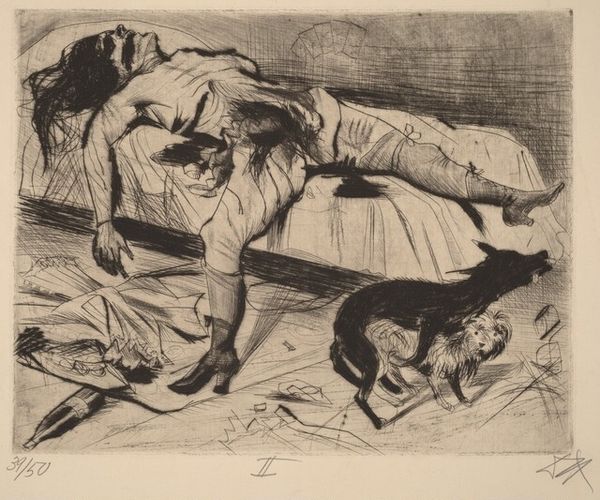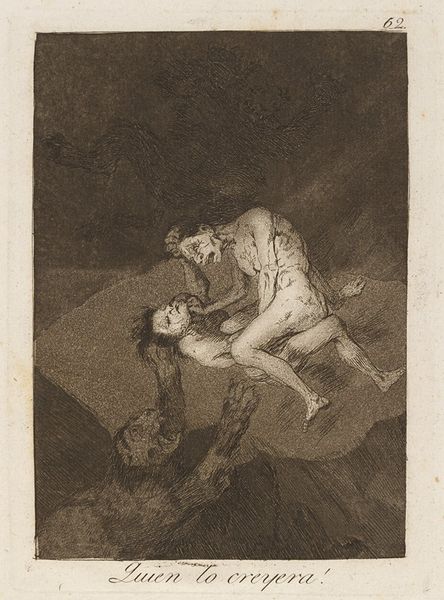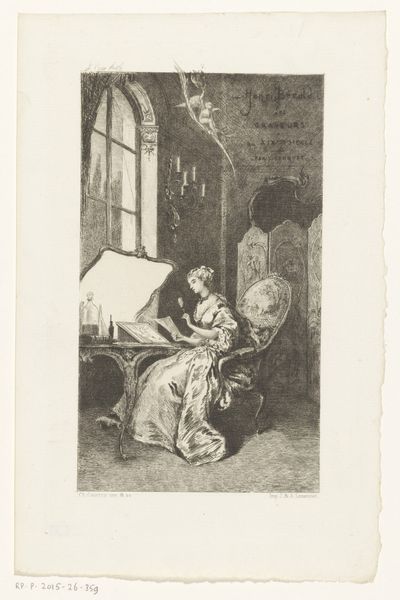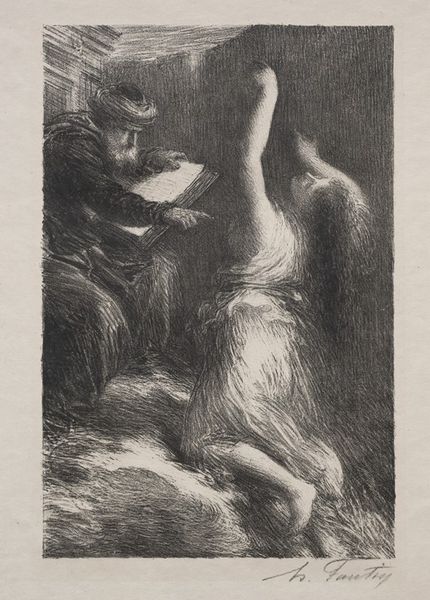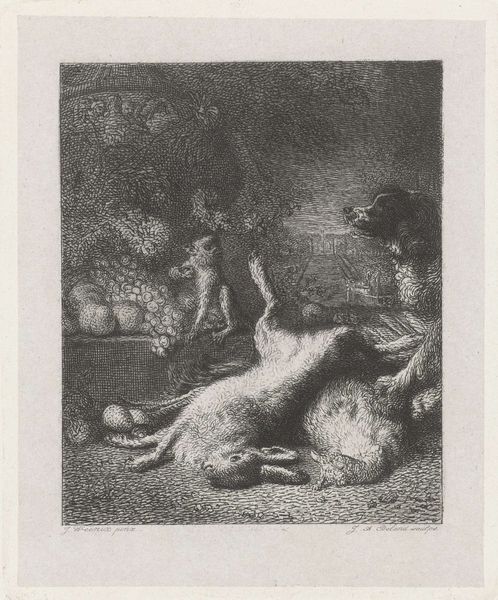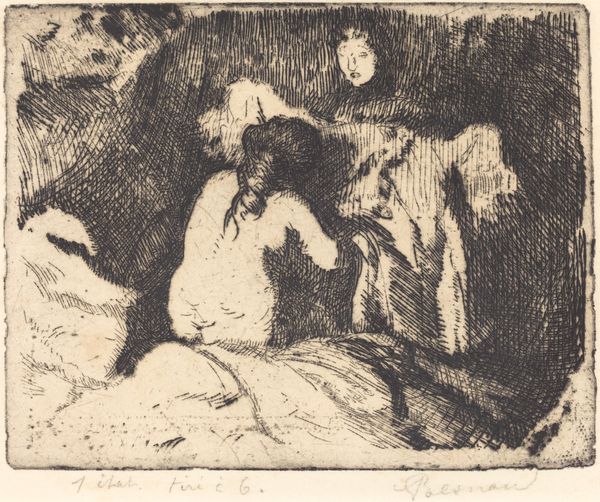
print, etching
#
imaginative character sketch
#
light pencil work
#
narrative-art
# print
#
etching
#
caricature
#
pencil sketch
#
cartoon sketch
#
figuration
#
personal sketchbook
#
idea generation sketch
#
romanticism
#
sketchbook drawing
#
storyboard and sketchbook work
#
cartoon carciture
#
sketchbook art
Copyright: Public Domain: Artvee
Curator: This etching, titled "Ni mas ni menos.", meaning "Neither More Nor Less," was created by Francisco de Goya around 1797. Editor: What a bizarre scene! My initial impression is of organized chaos, a satire conveyed through these unlikely animal figures. The donkey sitting for its portrait…it's wonderfully absurd. Curator: Goya, throughout his series "Los Caprichos," used animal allegories to critique Spanish society, often targeting the aristocracy and clergy. The donkey, in particular, was a symbol for ignorance and stubbornness. Here, he's elevated, literally, to the level of portraiture. Editor: So the monkey diligently painting, that’s society enabling this delusion, isn’t it? Like art critics of the day, maybe, perpetuating inflated reputations... I feel the dark humor. You almost want to laugh and then, oof, the truth stings. Curator: Exactly. Consider also that this print dates to the late 1790s, a time of immense social and political upheaval. Goya's work reflects anxieties about the old order clinging to power, even as its foundations crumble. Editor: It's still so relevant! The materials, the muted tones of the etching… they give it an almost dreamlike quality, despite the sharp satire. But that inscription beneath it: "Neither More Nor Less," I feel as if Goya challenges me. “Don't overthink this! Or, maybe, do, and see how close I came to truth.” Curator: I agree; this piece operates on multiple levels. On the surface, it's a caricature. However, deeper reflection can elicit more unsettling truths regarding political institutions, social status, or individual accountability. Editor: Absolutely. Art history allows us to view how an artwork represents particular historical realities, yet as artists and creators, it gives insight into the soul itself, even a rather dark and conflicted soul. What do we make of a world that celebrates asses? Goya invites us to ask these uneasy questions again. Curator: Indeed, "Ni mas ni menos" captures this cultural tension in such starkly ironic form, and its legacy remains disturbingly familiar in our world, two centuries later. Editor: You said it, what begins as whimsical critique evolves into grim social reckoning and…now I wonder who paints my portrait. Thanks, Goya, that's terrifying, yet brilliant food for thought.
Comments
No comments
Be the first to comment and join the conversation on the ultimate creative platform.
